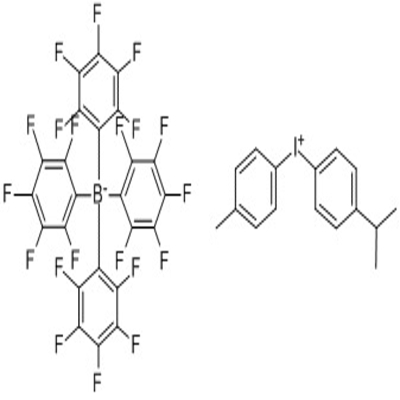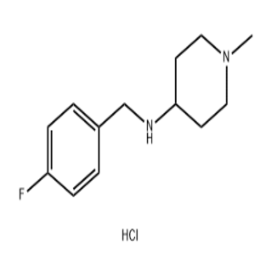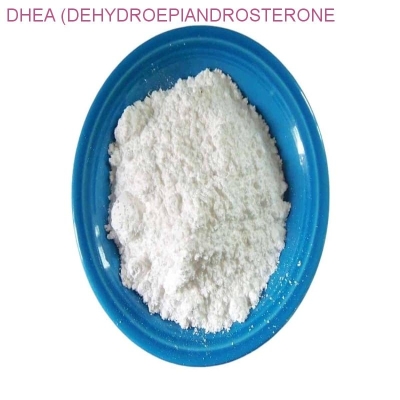-
Categories
-
Pharmaceutical Intermediates
-
Active Pharmaceutical Ingredients
-
Food Additives
- Industrial Coatings
- Agrochemicals
- Dyes and Pigments
- Surfactant
- Flavors and Fragrances
- Chemical Reagents
- Catalyst and Auxiliary
- Natural Products
- Inorganic Chemistry
-
Organic Chemistry
-
Biochemical Engineering
- Analytical Chemistry
-
Cosmetic Ingredient
- Water Treatment Chemical
-
Pharmaceutical Intermediates
Promotion
ECHEMI Mall
Wholesale
Weekly Price
Exhibition
News
-
Trade Service
Text . . Antibody drug conjugate is a compound that couples monoclonal antibodies with small molecule drugs through a linker.
ADC drug molecules contain antibodies, linker, small molecule drugs three structural modules.
typical ADC molecular structure diagram shows in Figure 1.
1 ADC Molecular Structure Map (source Wikipedia) German Nobel Laureate Paul Ehrlich first came up with the idea for ADC drugs in the early 20th century.
in 1958, Mathe first used anti-rat leukocyte immunoglobulin and methotrexate in the treatment of leukemia, the beginning of the study of antibody association drugs.
was limited by the anti-institutional preparation technology of the time, rat-sourced antibody-coupled drugs were not clinically successful, and the birth of hybrid tumor technology in 1975 gave birth to the first known ADC molecule.
, the selection of target antigens, antibody humanization technology, ultra-high cytotoxic small molecule drugs, antibody drug load and other issues with the technological progress of the time was solved one by one.
2000, the FDA approved the first ADC drug, Gemtuzumab ozogamicin (market name Mylotarg), but post-market monitoring found that Mylotarg was ineffective, had significant side effects, and that patients were at greater risk of taking the drug than benefiting from it.
mylotarg pulled out of the market in 2010 because of the dismal performance of the market.
kadcyla became the second approved ADC drug in 2013.
Kadcyla is a ADC developed by Genentech on the basis of star product Herceptin, along with Kadcyla's development, a number of ADC start-ups have been set up in China, including Rongchang Bio (2008), Dongyu Pharmaceuticals (2009), Therese (2010), Hangzhou Doxi (2012) and so on, these early startups have become the backbone of domestic ADC drug research and development.
Wyeth brought the adjusted dose of Mylotarg back to market in 2017 and successfully launched Besponsa the same year.
ADC drugs are truly on the market in 2019, with five ADCs approved so far in 2019.
2 ADDC Drug Development (The Royal Society of Chemistry, 2019) The three phases of ADC drug approval also truly reflect the three processes of ADC drug development.
technology platform for ADC drugs has also progressed over the course of these three processes.
the technical characteristics of ADCs at all stages, the industry divides ADCs into three generations.
the first generation ADC represented by Mylotarg, the second generation ADC represented by Adcetris and Kadcyla, and the third generation ADC represented by Besponsa, Padcev, Enhertu, etc.
1 ADC drug technology features at different times have been approved by the FDA for listing, and China's NMPA has approved two ADC drugs (Kadcyla and Adcetris).
August 2020, Rongchang Bio's Wedissyto monoanti (RC48) submitted a listing application and was included in the priority review, if approved, it will be the first domestic ADC drug to be marketed.
2 Approved ADC Drug Note: Data from the antibody society website and the .AAPS Journal, 2020 ADC drug development key elements of the target, antibody, effect molecule (payload), linker, DAR value (DAR, drug-to-to-antibody ratio, antibody binding drug molecule number, that is, drug-antibody ratio), these five aspects are the focus of ADC drug development, but also the key element of ADC drug development.
the DAR values are mainly determined by linker and tagging techniques.
3 ADC Development Structure Elements Diagram ( Polymers for Advanced Technologies, 2020. The nine ADC drugs that have been approved for market involve a total of 8 targets, of which CD22, CD30, CD33, CD79b, BCMA and other 5 targets have hematomas: HER2, Nectin-4, Trop-2, which have two HER-listed products.
four ADC drugs approved before 2019 were kadcyla alone, while three of the five ADC drugs approved after 2019 were solid tumor adaptations.
it's not hard to see that the hot spots for ADC drug development have shifted from hematomas to solid tumors.
to find the right drug target has become a hot spot for ADC research and development enterprises.
Because the drug effect of ADC drugs mainly depends on small molecule drugs, and the target only as a marker, as long as the ADC molecule can be recruited, as to whether the target has biological effects is not very important, so compared to monoclonal antibodies, ADC drugs target selection more.
potential targets are either over-expressed on the surface of the tumor or widely distributed in the tumor micro-environment.
Figure 4 ADC Can Develop Solid Tumor Antigen Targets (British Journal of Cancer, 2016) 2. Antibodies are used as ideal cytotoxic drug delivery vectors due to high antibody target specificity, long half-life, etc., ideal antibodies need to meet the target with a high affinity, usually Kd 0.1 to 1 nM, good blood stability, low immunogenicity and low cross-reaction.
IgG is more likely to be ingested by tumor cells and is often used as an antibody part of the ADC.
as the navigation system of ADC drugs, antibodies are mainly responsible for bringing small molecule drugs to the target cells to play a role, the antibody itself is not very important.
the antibody part of the ADC is different from the simple antibody drug in terms of mediated endo-swallowing and the therapeutic effect of the antibody itself, but the overall antibody selection and development strategy is not much different from the simple antibody drug.
3. The mechanism of effect molecules (Payload, with load/cell poison drugs/small molecule drugs) determines the effectiveness of ADC and the production of toxicity.
currently, commonly used cytotoxic drug effect molecules are micro-tube inhibitors (e.g. auristatins, maytansinoids), DNA damage agents (e.g. calicheamicin, duocarmycins, anthracyclines, pyrrolobenzodiazepine dimers) and DNA transcription inhibitors (Amatoxin and Quinoline alkaloids) (SN-38).
nine ADC drugs approved for the market use a total of 6 different small molecule drugs, of which 3 ADC drugs use MMAE as a couple of drugs, 2 drugs use Calicheamicin as a couple of drugs, and the successful application of MMAF, DM1, SN-38, Dxd.
small molecule drug results with more applications are shown in Table 4.
most of the ADCs currently approved use heterogeneic connection technologies, namely amine-based lysine conjugation and -based cysteine conjugation.
each antibody has multiple Lys/Cys bits, ADCs that combine small molecule drugs with antibodies are a mixture of ingredients with different DAR values (0-8).
's out-of-body phys effect is increased with the increase of DAR, but the effect of ADC in the body does not increase with the increase of DAR value, possibly due to the increase of hydrophobic small molecule drugs or/or linker to a certain extent, will lead to ADC in the water phase environment non-specific hydrophobic interaction and removal rate increase, it is actually possible that the higher the DAR value, the higher the toxicity, the lower TI.
currently, using site-specificity, The combination method of homogeneous conjugation chemistries can effectively control the DAR value and obtain better ADC stability and aggregation, just as the ADC with a quality (homogeneous) DAR value of 2 has a lower hydrophobic and aggregation effect of ADC with an average DAR value of 3.4-4 than the random binding method, but TI may be limited (e.g. PBD and Aur0101).
Table 4 ADC drug is currently more studied small molecule drug list 4. Linker linker is a combination of co-price to connect the monoantigen and small molecule drug parts, linker stability in blood flow is very important, generally linker than ADC half-life is better.
ideal linker needs to be stable enough in the circulatory system to reduce the toxic reaction caused by off-targeting, and to release effect molecules once internalized into the target tissue.
, the linker's association determines many important properties of ADC drugs, such as DAR value distribution, therapeutic index (therapeuticindex, TI), PK/PD, and so on.
the selection of linker and binding points is related to the stability of ADC, considering that small molecule drugs are generally hydrophobic, linker needs to have a certain hydrophobicity for easy connection.
the advantages and disadvantages of different conceded links are shown in Table 5, depending on whether linker is cracked within the cell: cleavable linker and non-cleavable linker.
the advantages and disadvantages of different conceding links in Table 5 (Protein Cell, 2018) The complex structure and mechanism of action of the advances in pharmacodynamics makes ADC pharmacological research more challenging.
ADC administration is mainly intravenous administration, and when the drug enters the body, it can enter the cells through specific and non-specific channels.
The specific way is to bind to the receptors on the surface of the cell, to reach the cell through internalization, to enter the lysosome through internal swallowing small bodies, the acidic environment of the lysosome and the proteolytic enzyme will cause ADC degradation, the release of the effect molecules then into the cytotyte, and then through DNA insertion or inhibition of micro-tube synthesis and other ways to induce apoptosis;
addition, the ADC can also use the "bystand effects" to play a lethal role, that is, lysed or released cytotoxic drugs can enter adjacent cells, play a lethal role, and of course, will produce resistance.
Figure 5 ADCs' in vivo processes and their tumor immune mechanism schematics (BioDrugs, 2018) The main body of the ADC is antibodies (-98%), in addition to the pharmacodynamic characteristics of antibodies, but also because of the binding of effect molecules, so that it presents a unique PK characteristics.
this section mainly introduces the influence factors, PK characteristics and dynamic models of ADC PK.
1. After the PK influencer ADC enters the body, the effect molecules can be gradually dissogated from the main structure by enzymatic or chemical reaction, and the total antibody (Total antibody, Tab), binding antibody (ADC) and free effect molecule (unconjugated drug) (Figure 6) are obtained, and their changes in the concentration in the body are essential for interpreting the pharmacy characteristics of the ADC.
The total antibody is the sum of the binding antibody and the naked antibody (DAR-0), the binding antibody is the antibody binding at least one effect molecule, is the prototype drug of the ADC, the free effect molecule is the free effect molecule formed after ADC lysing or decomposed metabolism and/or retaining the effect molecular structure of the associated amino acid residue and/or linker effect molecular metabolites, is the material basis of ADC toxicity evaluation.
and target binding specificity, linker stability, application of new effect molecules and other research is the key to the success or failure of the development of ADC drugs, by optimizing the structure of ADC, improve its PK characteristics, can better clarify the dose-effect relationship, so as to evaluate safety and effectiveness.
Figure 6 ADC Drug Disposition (The AAPS Journal, 2020) 1.1 Structure 1.1.1 Antibody Structure Itself, Affinity, Specificity, FcRn Binding Capability, and Fc Effect Functions of Fc-mediated Antibodies (e.g., ADC or CDC) all affect the PK of the ADC.
effects of ADC effector function on drug effectiveness and toxicity are not clear.
although Fc can enhance the role of ADC in killing tumors, Fc gamma is the main cause of off-target and dose-limiting toxicity.
ADC, which already has the missing effects, has been approved for listing (Mylotarg and Besponsa).
high antibody specificity avoids toxicity, and the lack of specific antibodies is eliminated by the circulatory system before reaching tumor tissue.
1.1.2 The introduction of effect molecular effect molecules will make ADC aggregation, the chemical and chemical properties are unstable, not only because of its quantity and hydrophobic increase makes the ADC hydrophobic significantly increased and unstable, but also because this binding effect will cause changes in the secondary and third-level structures of antibodies to reduce the stability of the composition.
same time, the permeability, metabolism, and substrate of P-gp of the effect molecule are important for bystander efferts and induced resistance.
effect molecular binding bits will be A







